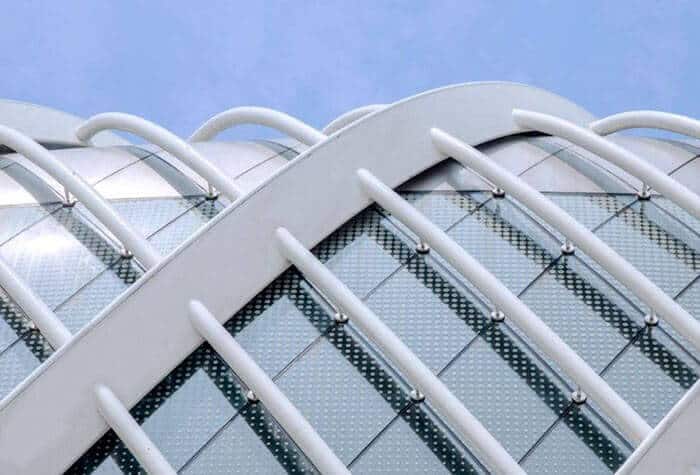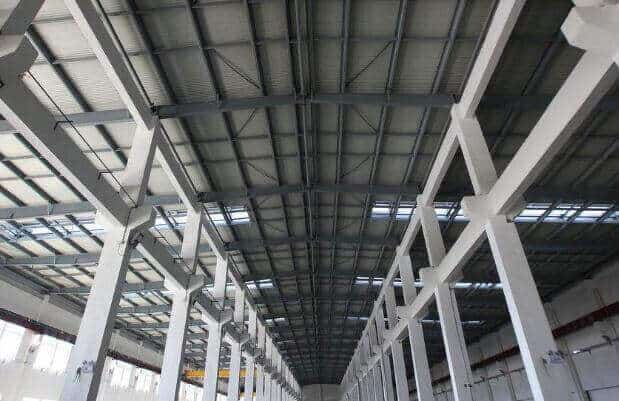In the construction of modern storage facilities, steel structure warehouses have become one of the mainstream building forms due to…
The prefabricated steel building is a more cost-effective choice for a new construction project. The efficiency of prefab steel buildings can reduce costs due to the high ability of many aspects of metal structures. Sure, different steel structures and buildings have different costs. Actually, from the moment you decide to build a steel structure project, you can reduce steel structure building costs and save expenses as much as possible without reducing the quality of the project.

Steel structure building cost optimization
The main components of steel building cost
The cost of constructing a steel building mainly includes material costs, manufacturing and processing costs, transportation and installation costs, design and construction management costs, etc.
Material cost: The material cost of steel structure buildings accounts for a large proportion of the entire cost. Steel prices are affected by market supply and demand, raw material prices, and other factors.
Manufacturing and processing costs: Steel structures’ manufacturing and processing costs include processing equipment, labor costs, and high investment and maintenance costs for processing equipment. Generally speaking, the proportion of manufacturing and processing costs in the cost of steel structures is between 20% and 30%.
Transportation and installation costs: Transportation distance and difficulty affect steel structures’ transportation and installation costs. Generally speaking, transportation and installation costs account for between 10% and 20% of the steel structure cost.
Design and construction management costs: Steel structures’ design and construction management costs include design fees, construction management fees, etc. The proportion of this part of the fee is relatively small, generally between 5% and 10%.
Optimization strategy of steel structure cost
The optimization of steel structure cost can be considered from material selection optimization, processing cost optimization, transportation cost optimization, and design and construction cost optimization.
1. Material selection optimization
Materials account for the most significant part of the cost for steel structure buildings, so the use of materials needs to be repeatedly demonstrated.
Appropriate steel specifications and varieties are selected in steel structure projects based on design requirements and actual load-bearing conditions. Structural designers and materials experts work together to determine the steel specifications that best suit the project’s needs to ensure the structure’s safety and economy. When selecting steel varieties, consider material strength, corrosion resistance, and weldability to meet the project’s specific requirements.
Structural load type and size:
Select appropriate steel materials based on the load type and size designed for the project. For example, high-strength steel, such as Q355B steel, must be selected for parts that bear large loads to ensure the safety and stability of the structure.
Structural design requirements:
According to the structural design requirements, select steel materials that meet the requirements. For example, stainless steel materials or anti-corrosion coatings with good corrosion resistance must be chosen to protect parts requiring corrosion resistance.
Construction conditions and environment:
Consider the project’s construction conditions and environment when selecting steel materials. For example, steel materials that can adapt to high or low temperatures are necessary.
2. Processing cost optimization
Optimize the process flow, improve production efficiency, and reduce labor costs and energy consumption. Use advanced CNC equipment and automated production lines to improve processing accuracy and efficiency and reduce manufacturing costs.
Design optimization:
Structural design optimization can reduce material costs by reducing the weight of components and material usage. Use reasonable structural forms and cross-sectional shapes to minimize waste and improve material utilization.
Automated processing:
Using automated processing equipment, such as CNC cutting machines, CNC welding machines, etc., can improve processing efficiency, reduce labor costs, and reduce human errors.
Mass production:
Mass production can reduce the cost of a single piece for repetitive components. Reasonable production planning and process flow can improve production efficiency and reduce costs.
Material procurement optimization:
Compare with multiple suppliers, select suppliers with reasonable prices and reliable quality, and obtain more favorable purchase prices through negotiation. Properly arrange the storage and use of materials to avoid material waste caused by improper management.
Refined management:
Strengthen construction site management and strictly control material loss. The generation of waste materials is reduced through reasonable cutting and processing, and material costs are effectively controlled.
Improve workers’ skills:
Improve workers’ skill levels, reduce operating errors, improve production efficiency, and reduce labor costs.
3. Transportation cost optimization
The transportation cost of steel structure components can be effectively reduced through assembly design, transportation mode selection, packaging optimization, transportation organization optimization, and other means.
Reducing the weight and volume of components can reduce transportation costs. Use reasonable structural forms and cross-sectional shapes to improve material utilization while reducing components’ size, weight, and transportation costs.
Significant components can be designed into an assemblable structure to reduce the size of the components and facilitate transportation. Consider the assembly and disassembly of components during design to minimize transportation volume and transportation costs.
Choose the appropriate transportation method based on the size and weight of the components. You can choose road transportation for small and lightweight components; for large-weight components, you can select water transportation or railway transportation. Choose the most economical transportation method according to the actual situation.
Packaging protection is provided to avoid damage during transportation and reduce loss and maintenance costs for easily damaged components.
At the same time, when choosing a processing plant, select a plant close to the project.
4. Design and construction cost optimization
Optimize the structural design and reduce the amount of materials used. By reasonably optimizing the structural design, we can reduce the use of unnecessary components and materials, reduce the structure’s weight, and thereby reduce the structural cost. Use reasonable cross-sectional shapes and material specifications to improve material utilization and reduce waste.
In terms of construction management, strengthening project management, improving construction organization efficiency, and reducing management costs, material loss must be strictly controlled if materials require on-site processing. Reduce waste generation and effectively control material costs through reasonable cutting and processing.
The following suggestions not only save money to reduce steel structure building costs, but they can also improve the scope and results of the project.
1. Consider the service life of the metal structure buildings
When considering the budget and total cost of prefabricated building projects, it should find more points than construction costs if you want to build a structure that can safely be maintained for decades with only moderate or minimal maintenance. Then, you will find that the total cost of the steel structure building is minimal. The wood frame structure or other types of buildings will have higher maintenance costs.
2. Consider local climatic conditions to reduce steel structure building costs
Buildings and climate are closely linked. Building design and construction should fully account for domestic natural and social situations to create a suitable indoor environment. For example, natural ventilation and cooling should be considered first in hot and humid areas.
At the same time, a series of necessary measures such as shading, heat insulation, rain, and moisture must be found to meet the functional requirements fully.

In the dry and hot areas, the design should pay attention to selecting materials for the enclosed structure and focus on building materials’ conductance and heat storage performance.
In dry and hot climate conditions, it is generally appropriate to use heavy structural elements to adapt to the characteristics of the excessive temperature difference between day and night in dry and hot areas.
The correct design, according to different climates, can ensure unnecessary waste of construction costs. A professional designer will consider the local wind and snow loads to ensure safety while designing and using a minimum of steel components to reduce construction costs reasonably.
3. The pursuit of efficiency to lower the steel structure costs
Although steel structures have the advantage of a shorter construction period than other types of buildings, the construction time can still be shortened. You should also consider the seasonal impact. Weather conditions in different seasons will affect the availability of materials and labor and the need for specific equipment. Besides, the shortage of local labor market workers needs to be considered.

Make sure that the materials arrive on time at the construction site, that all materials are qualified and available, and that the construction staff is adequate to use the labor force as effectively as possible. Therefore, construction runs through the entire project period. Otherwise, it will face extended periods and pay more Labor costs.
4. Timely communication and exchange
Maintain a stable and timely communication speed, communicate with the builder, and avoid rework and funds waste due to insufficient communication. Any problems found throughout the construction phase or after construction should be communicated and improved promptly. Ensure that everything in the steel structure contract is implemented following regulations.
5. Energy-saving design
Reasonably, choosing some energy-saving facilities can reduce the energy used for lighting, heating, and air conditioning, saving electricity costs and power consumption. Some specially coated roof panels can reflect solar energy and re-radiate heat in the form of light, which can even save up to 40% or more of energy costs. It is designed to use better fire-resistant and anti-corrosive coatings so that it will not cost too much maintenance and replacement costs.
6. Select a professional steel structure manufacturer
Choosing a professional steel structure company can give you suggestions, provide professional design, and guarantee after-sales service. And help you save the steel structure building costs
Havit Steel Structure Company has been established for over ten years. It has a professional design team, abundant production and export experience, reasonable prices, and high-quality products and services. So far, Havit steel structure projects have been exported to more than 20 countries and have been highly appreciated by customers. Welcome to Havit Steel Structure Company to guarantee your building!














